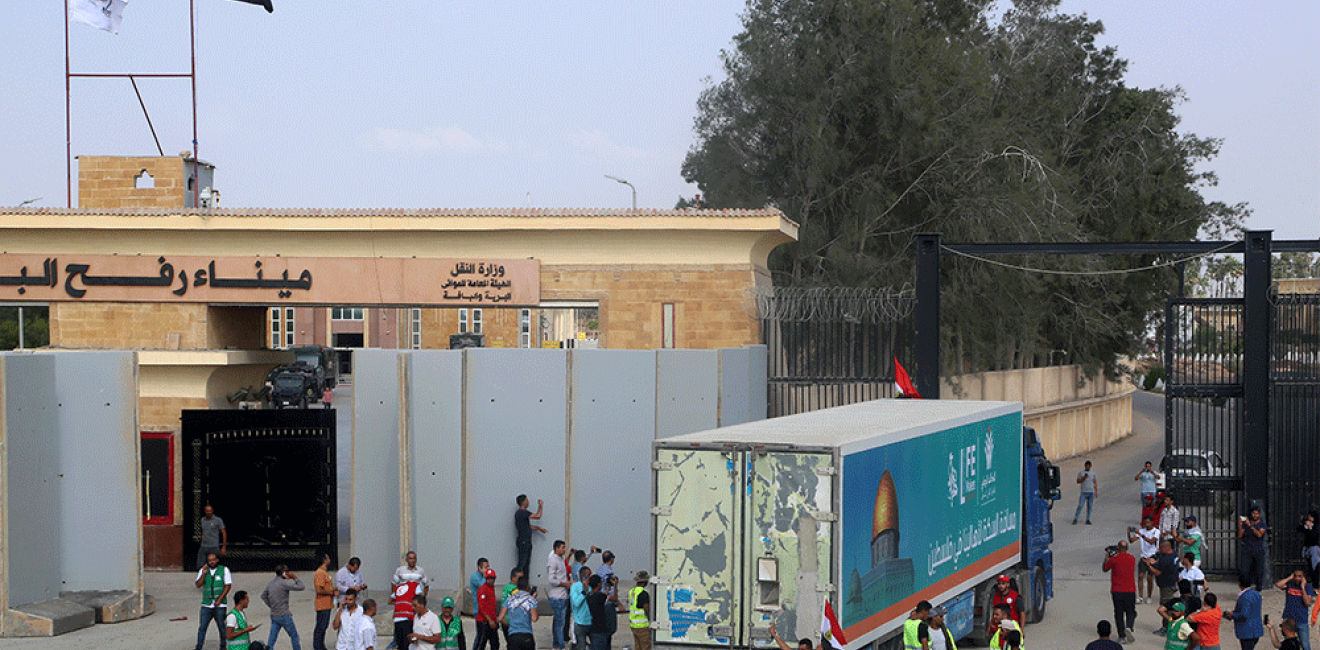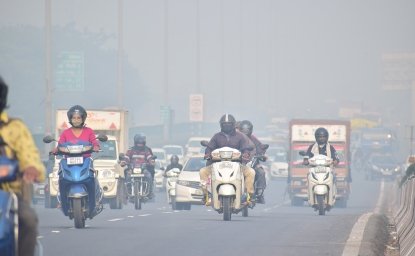
A blog of the Wilson Center

The United Nations recently estimated that an additional $294 million in humanitarian assistance is urgently needed for people in and around the Gaza Strip. The United States has pledged to provide $100 million; Canada and Germany have each pledged $50 million. China, the world's second-largest economy, has pledged just over $2 million.
The level of humanitarian need in the West Bank and Gaza is immense. To be clear, it was high long before Hamas launched its terrorist strikes on Israel on October 7. In January 2023, the UN projected that more than $500 million was needed for its West Bank/Gaza humanitarian response plan based on its calculation that approximately 2.1 million people there—including 1 million children—were in need of humanitarian assistance. Before the attacks, aid organizations told Time magazine that approximately 500 trucks of humanitarian and commercial supplies were coming into Gaza from Israel each day to help address the crisis. Secretary Blinken testified before Congress that the US would like to see up to 100 trucks of assistance enter Gaza daily. But perhaps the clearest evidence of the level of need came in late July when thousands of Palestinians hit the streets of Gaza to protest the chronic power outages and poor living conditions they were suffering under Hamas control.
The shortfalls were made even worse, argues Israel and others, by the levels of assistance being diverted or controlled by Hamas, keeping it from reaching Palestinians in need. In the wake of Israel’s announcement that it would allow more trucks filled with humanitarian supplies to enter Gaza, Israeli leaders—together with the Biden administration, Egypt, the UN, and others—have put in place new inspection measures aimed at preventing fuel and other supplies from being captured by Hamas.
As these moves are made, it’s important to understand where aid is—and is not—coming from. Humanitarian assistance is a distinct form of assistance. It is not development assistance, but assistance, in the words of the US Agency for International Development, to “save lives, alleviate human suffering, and reduce the impact of disasters by helping people in need to become more resilient to humanitarian crises.” Other than measures aimed at preventing fraud, waste, and abuse, humanitarian assistance is largely offered without condition or expectation of anything in return. In other words, unlike the way China approaches much of its development support, it should never take the form of loans or financing.
The US is far and away the world's largest donor of humanitarian assistance. According to the Financial Tracking Service of the UN's Office for the Coordination of Humanitarian Affairs (OCHA), the US provided 41.5% of its global funding in 2022. Germany was second at just under 13%, and the European Commission was third at 7.6%. Middle Eastern donors fell further down the list, with Saudi Arabia at 2.2% and the United Arab Emirates (UAE) at 1.2%. Neither China nor Russia made OCHA’s list of top 20 humanitarian assistance donors.
Prior to the start of the Hamas-Israel war, the list of top humanitarian donors specifically for the West Bank-Gaza included the European commission, the United States, Saudi Arabia, Germany, and the UAE. The US alone was providing food assistance to more than 1.2 million people in West Bank/Gaza. Since the war began, a small group of nations (including Turkey, Qatar, the UAE, Jordan, India, Tunisia, and Rwanda) have sent medical supplies, food, and drinking water to the region in anticipation of the opportunity to deliver it into Gaza.
There’s no doubt that people in West Bank/Gaza have profound humanitarian needs—and have for some time. It is appropriate to ask questions about the barriers that prevent assistance from entering Gaza, and where that assistance goes once it does. It is right to be outraged at Hamas and others who have prevented portions of assistance and supplies from reaching the people it was intended for—Palestinians in great need.
But it’s vitally important that it doesn’t stop there. Countries need to open their wallets, and provide humanitarian assistance for those in need. According to OCHA, as of October 27, only about $107 million worth of pledges have accorded in response to the flash appeal from October 12—just 37% of what’s required.
For years, too many countries have ignored poverty and need—not only in West Bank and Gaza, but elsewhere in the region. It is long past time to provide the support needed to truly alleviate suffering.
Author

Explore More in Stubborn Things
Browse Stubborn Things
Spying on Poachers

China and the Chocolate Factory

India: Economic Growth, Environmental Realities
